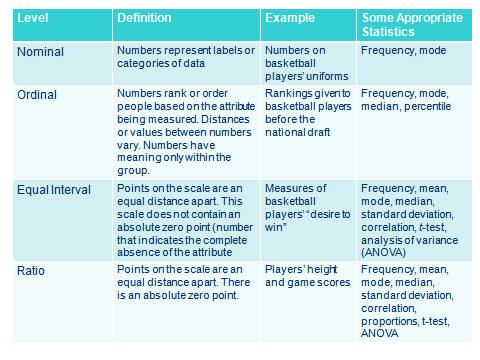
Correlation and Regression
Psychology of Testing & Measurements
Lecture, Chapter 3
Parts of a Relationship between 2 Variables
Scatter Diagram a picture of a relationship between 2 variables that allows
visual inspection
Correlation a mathematical description of whether or not two variables covary
see p. 66 for graphs of the following relationships:
Positive correlation As X increases, Y increases.
Negative correlation As X increases, Y decreases.
No correlation As X increases, Y stays the same.
Correlation Coefficient a mathematical index describing the direction and
magnitude of a relationship, ranging from -1.0 to 1.0 (0 = no correlation)
Regression/Correlation
Predictions can be made about one variable from another using a technique called
regression.
A regression line is the centermost straight line through a set of points in a
scatter plot.
a = Y - bX
r = ∑(dx)(dy) ________
N(Sx)(Sy)
Causation versus Correlation
There exists a very significant danger of incorrect conclusions when inferring
causation from correlation.
One study found a correlation between ice cream sales and drownings.
One does not cause the other they are both related to a third variable, summer
Even then we cannot infer that summer causes ice cream eating and/or drowning
because there are examples of both happening in the winter also.
Another study found a significant association between IQ score and academic
achievement.
Other Correlation Coefficients
Pearson product moment correlation coefficient a ratio used to determine the
degree of variation in one variable based on knowledge of variation in the other
(both continuous)
Dichotomous variables only 2 levels (naturally occurring = true; continuous scales forced into dichotomy = artificial)
Spearmans rho association between two sets of ranks (ordinal variables).
Biserial correlation 1 continuous and 1 artificial dichotomous variable
Point biserial correlation 1 continuous and 1 true dichotomous variable
Phi coefficient both are dichotomous and at least 1 is true
Tetrachoric correlation both dichotomous variables are artificial
Multivariate Analysis
Multivariate analysis considers the relationship among combinations of two or
more predictor variables and one criterion using a linear combination.
Multiple regression
Discriminant Analysis
Factor Analysis a type of analysis used to study the interrelationships among
a set of variables without reference to a criterion.
